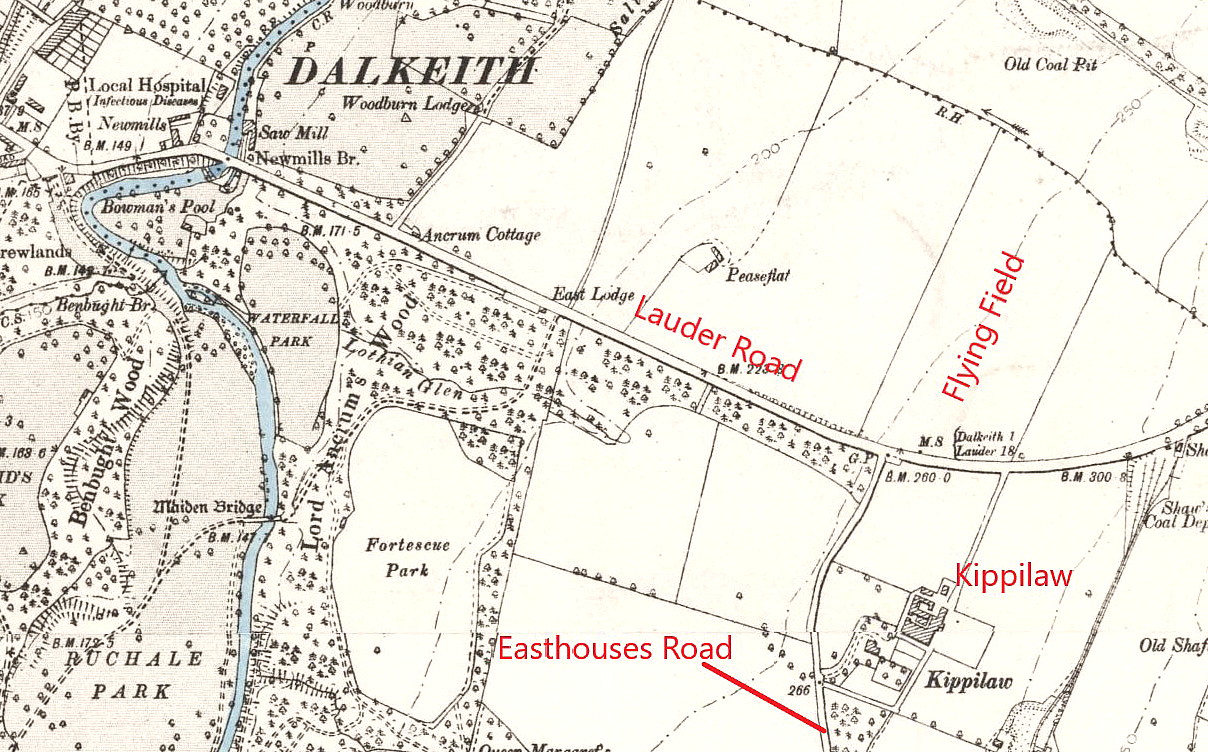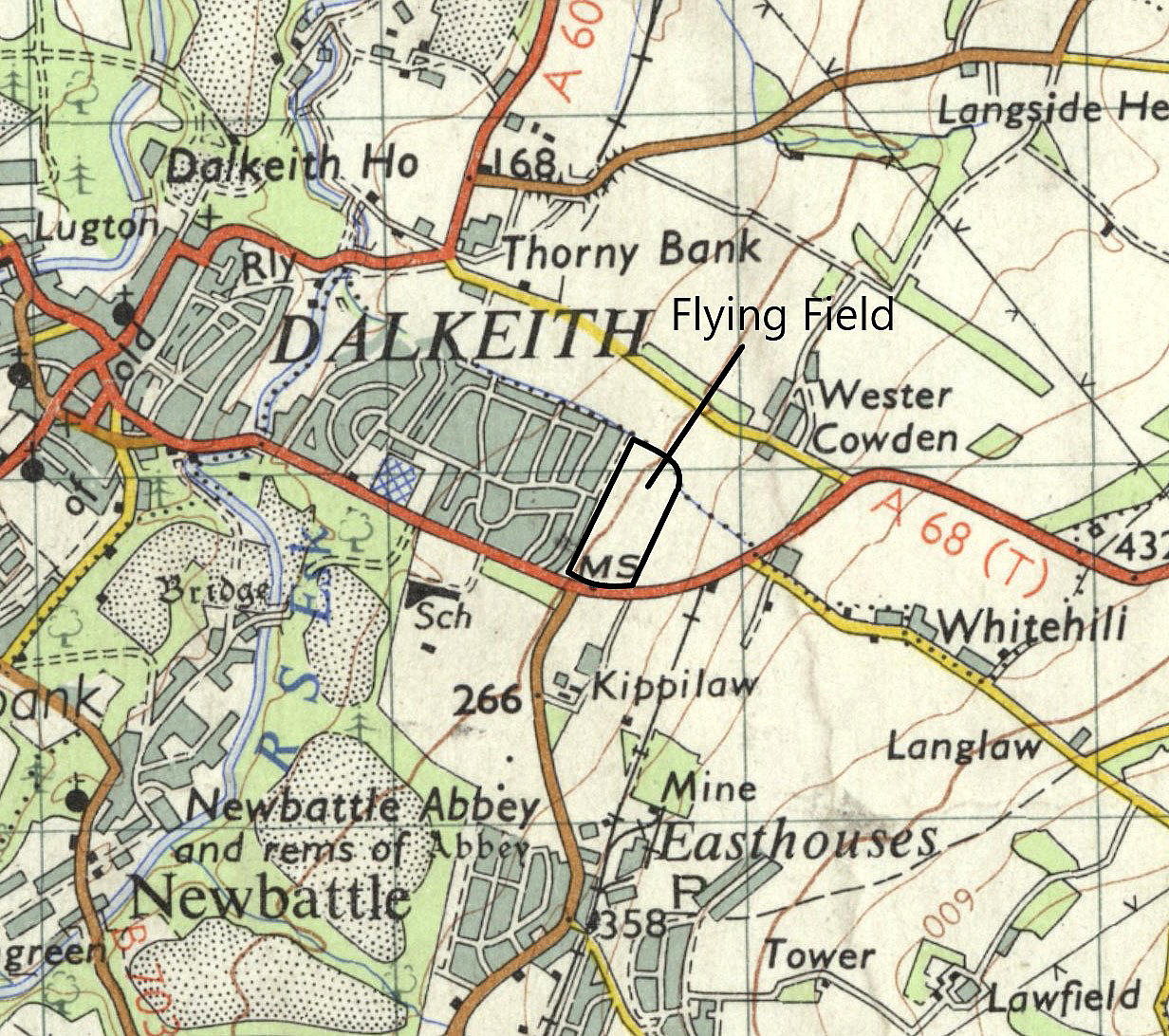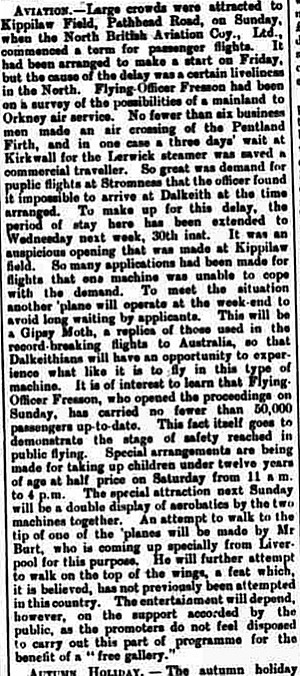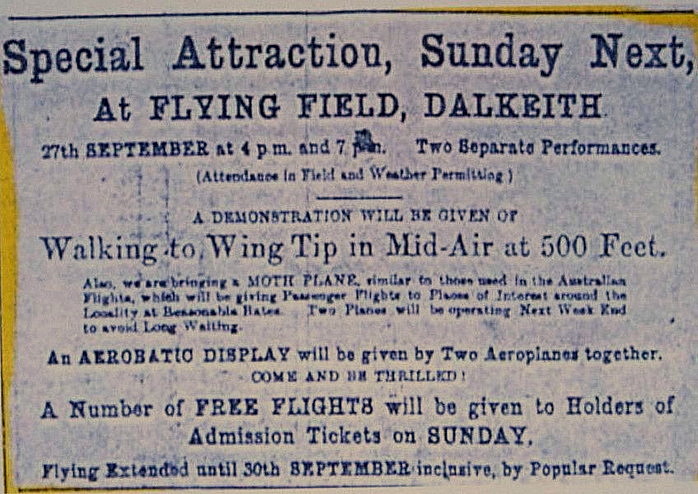Dalkeith
DALKEITH: Temporary aerodrome (Aka KIPPILAW)
Operated by: North British Aviation Co. Ltd
Location: Just ESE of Dalkeith town centre, 5nm SE of Edinburgh city centre
Period of operation: 18th to 30th September 1931
A MICHAEL T HOLDER GALLERY
NOTES: The two adverts and the article are from the Dalkeith Advertiser. The original schedule was from the 18th to the 25th September, but as the second advert shows, the event was extended to the 30th - "By popular demand".
By comparison to the much, much larger fleet of aircraft used by Sir Alan Cobham's National Aviation Displays a year later in 1932, this would have been a rather modest affair. As far as I can make out, North British Aviation, (based at HOOTON PARK in CHESHIRE), only operated four aircraft - all Avro 504Ks - registered as G-EBGZ, G-EBIS, G-EBSJ and G-EBXA. In fact, according to the newspaper article, only one was intended to display at DALKEITH. The public demand for flights being such that a second aircraft, a de Havilland DH60 Moth was hired in.
The main difference between most Avro 504Ks being used commercially and the DH60 Moth is that the 504K could be easily and relatively cheaply modified by Avro to accomodate two passengers, whereas the Moth could only carry one. It might also seem incredible to us today, that even by 1931 very few people in the U.K. had ever flown - so the public demand was huge - even at 5/6d each for a short flight. It also needs to be borne in mind that 5/6d was then a substantial amount of money for most people, when a typical manual worker was paid about £1 a week.
We'd love to hear from you, so please scroll down to leave a comment!
Leave a comment ...
Copyright (c) UK Airfield Guide





















